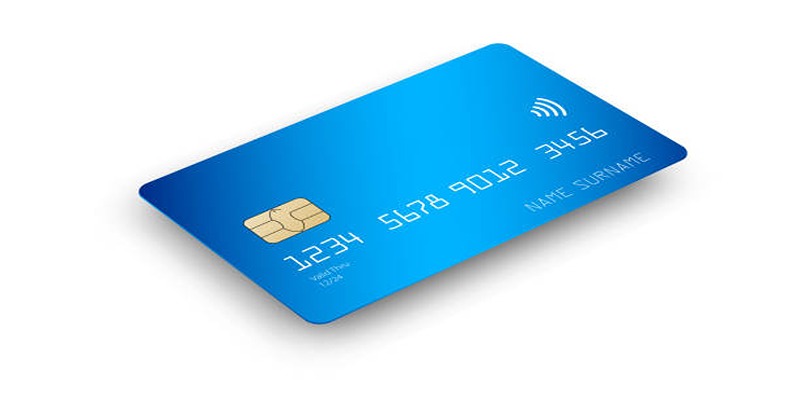Thinking about upgrading your credit card for better perks or higher rewards? It’s easier than you think! Whether you’re after extra cashback, exclusive travel benefits, or a higher credit limit, upgrading can help you maximize the right offer for your financial needs. This guide simplifies the process with clear, actionable steps, so you can choose the perfect card to fit your lifestyle. Let’s get started!
Reasons to Upgrade Your Credit Card

It’s important to recognize why upgrading your credit card can be worthwhile.
Access to Better Rewards
Higher-tier credit cards often come with increased rewards rates. For example, you may receive greater cashback percentages on everyday expenses or earn points for travel, shopping, or dining expenses faster than with a standard card.
Exclusive Perks and Benefits
An upgrade might give you access to an exciting selection of perks, such as lounge access at airports, concierge services, enhanced travel protection, or waived foreign transaction fees. These benefits could make your credit card feel significantly more valuable.
Higher Credit Limits
If you’re aiming to increase your buying power or improve your credit utilization ratio (important for boosting your credit score), upgrading to a card with a higher credit limit could work in your favor.
Tailored Features
Upgrading your card allows you to choose one that aligns better with your financial objectives. Whether it’s a travel-focused card or a premium dining card, upgrading can help fine-tune your credit card experience to suit your lifestyle.
Steps to Upgrade Your Credit Card
Now that you’re clear on the potential benefits, here are the simple steps to upgrade your credit card.
Step 1. Evaluate Your Current Card
Start by examining the card you already have. Look at its annual fee (if any), perks, rewards, and other features. Ask yourself if your current card still aligns with your financial habits. This will help you identify what’s missing or what you’d like to improve.
Step 2. Research Other Credit Cards from Your Issuer
Once you understand your priorities, take a look at what other card options your current credit card issuer provides. Many issuers offer tiered card options, such as starter, mid-level, and premium cards. Research thoroughly to determine which upgrade could become a suitable match. Pay special attention to the following details:
- Annual fees
- Rewards programs
- Introductory bonuses
- Interest rates (APR)
- Additional perks (insurance protections, lounge access, etc.)
Step 3. Compare Cards from Other Issuers
Though upgrading with your current issuer might seem like an easy route, it’s a smart idea to research credit card offerings from competitors as well. You may come across a card from another bank that better suits your goals or provides more appealing rewards. Compare offers from multiple institutions before proceeding.
Step 4. Review the Requirements for Upgrading
Once you’ve decided on the card you want, check if you meet the specific eligibility criteria. This might include:
- A good or excellent credit score
- A solid payment history for your current card
- Meeting minimum income criteria
If you’re new to credit or have a limited history, you may need to start by building your credit score further before qualifying for a premium upgrade.
Step 5. Contact Your Issuer
Now it’s time to get in touch with your current issuer. You can usually do this by calling their customer service directly or using the chat feature in their app or website. Here's what you should ask:
- Are you eligible for an upgrade based on your current account standing?
- Is there a fee to upgrade your card?
- Will you keep your current account number, or will a new account be created?
If your issuer approves your upgrade, they’ll guide you through the next steps.
Step 6. Watch Out for Fees and Terms
Be sure to review the following before upgrading:
- Annual Fee Changes: If you're upgrading to a premium card, the annual fee may increase. Make sure the benefits justify the price.
- Interest Rates: Check whether the APR on your new card will change.
- Reward Program Details: Understand how your reward points or rates will be affected.
- Impact on Credit Score: Know whether the upgrade will cause a hard inquiry. A hard inquiry could temporarily lower your score.
Step 7. Start Enjoying Your Upgraded Benefits
Once your upgraded card arrives, activate it and explore its benefits! Use it strategically for the types of purchases that offer the highest rewards or perks.
Pro Tips for a Smooth Upgrade
Here are some additional tips to make your upgrade process effortless:
- Leverage Incentives: Look for cards offering impressive sign-up bonuses or promotional periods when upgrading.
- Use Your Old Rewards: Transfer or redeem any unused rewards from your old card so you don’t lose value during the upgrade.
- Organize Your Finances: Before upgrading, ensure your existing credit card balance is paid off. This will minimize interest charges and create a smooth transition to your new card.
- Track Spending: Premium credit cards often come with perks that hinge on meeting certain spending thresholds. Track your expenses to maximize benefits.
Benefits of Staying Upgraded

Upgrading isn’t just a one-time win; it can positively impact your financial health and lifestyle in the long term. Here’s how:
- Enhanced Experiences: Enjoying access to exclusive travel deals, hotel benefits, and experiences adds a touch of luxury to your life.
- Improved Credit Score: Responsible use of an upgraded card with a higher credit limit can help improve your credit utilization ratio, boosting your overall credit score.
Final Thoughts
Taking the time to upgrade your credit card opens up a world of financial opportunities. From better rewards to elevated benefits, an upgraded card can enhance your lifestyle while improving your financial health. Carefully follow the steps above to research, compare, and apply for the best upgrade available. Why wait? Start exploring your options today, and take full control of your financial future with an upgraded credit card that works for you.












